Crofthouse by James Stockwell
This zinc-clad house in Australia by Sydney architect James Stockwell has a sand dune-shaped body that turns its back to the prevailing wind (+ slideshow).
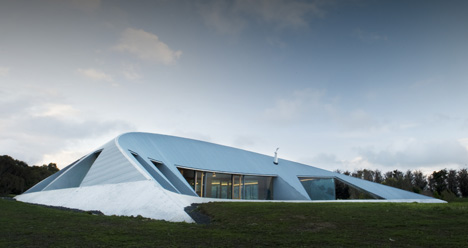
Located on the south coast of Victoria, Crofthouse was designed by James Stockwell as a rural residence that merges into the landscape whilst creating protected terraces around its perimeter.
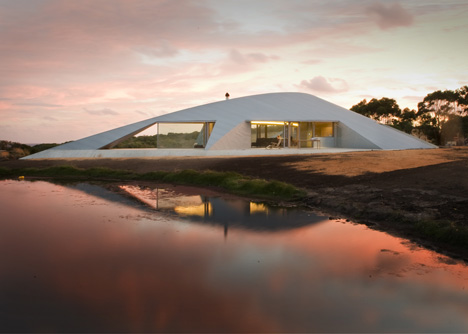
"The design looks at the core idea of shelter in an exposed environment and [how] that shelter may contain the activities of domestic life in an uncompromised way," says Stockwell. "It is shielding, robust and embracing."
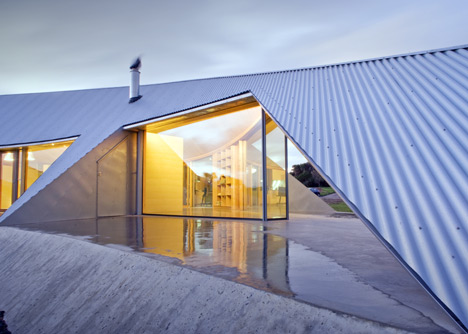
Two tapered facades give a half-moon shape to the house, loosely framing a semi-circular garden in front. Meanwhile, a series of recesses create a row of sheltered patios along the back.
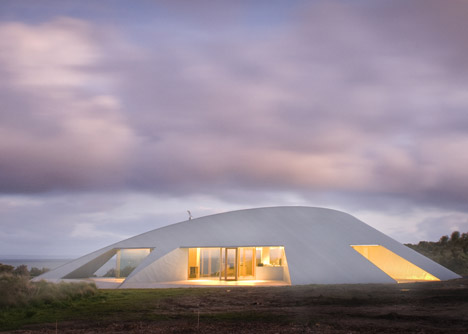
The exterior walls are clad with grey zinc, as a reference to the local vernacular of buildings with corrugated metal facades. "This shield-like exterior makes for virtually no maintenance," says the architect.
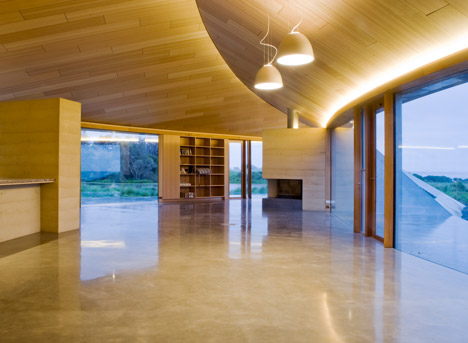
Behind the cladding, a curved timber frame gives the building its shape, while interior surfaces are lined with ash panels.
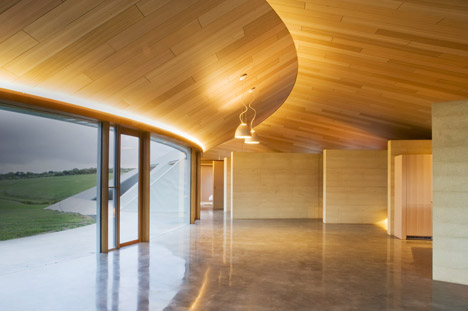
Chunky partitions are built from compressed sand and separate the large living room from a pair of bedrooms and a bathroom at the southern end of the house.
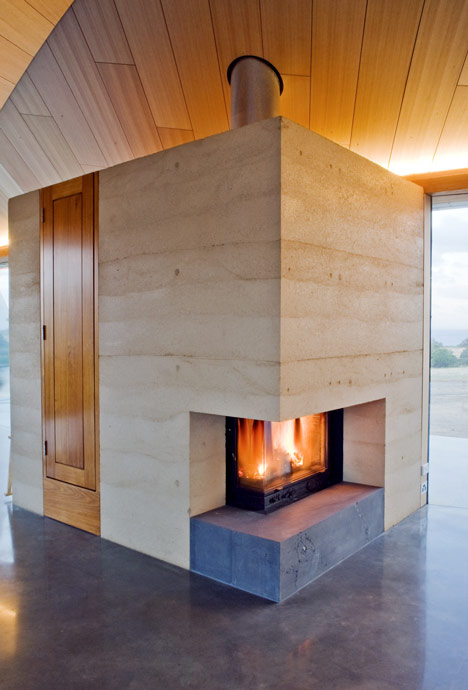
A wood-burning stove is positioned at the centre of the building and well-insulated walls enable a system of passive heating and cooling. There's also a ground-sourced heat pump to bring additional warmth beneath the flooring.

See more Australian houses on Dezeen, including a residence on a vineyard in Mornington Peninsula and a courtyard house near the beach in Melbourne.
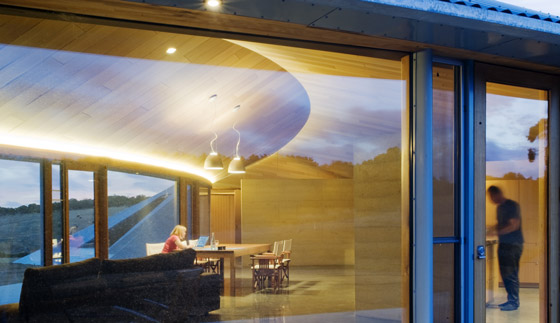
Photography is by James Archibald.
Here's a project description from James Stockwell
Crofthouse
This architecture attempts to be a part of the natural systems of wind, rain and sun patterns on the site, working with the elements. The design looks at shelter in an exposed environment and that shelter may contain the activities of domestic life in an uncompromised way but that these activities are enhanced by participating in the role of the overall form.
It adopts the language of the rural context of corrugated metal. It illustrates the suitability of local low embodied energy materials in contemporary architecture and that architecture be able to tell a story of its place.
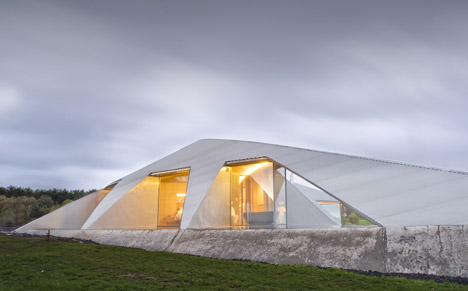
The pallet of grey metal and concrete blends with the muted shale geology. The protective exterior is warmed by compressed sand walls, a fragment of distant sand dunes. The interior structure and joinery is of local Vic ash timber. Running costs are minimised by passive solar design.
The form of the house distorts mathematical and structural curves to achieve the interior purpose. Laminated timber beams form the sine curve of the building courtyard, the natural curve of material ductility.
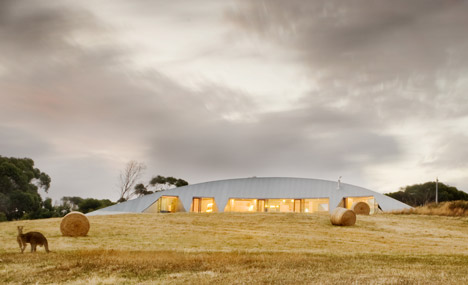
The project is of low embodied energy construction of local compressed sand walls and the entire structure and finishes are of local timber (both 0.5MJ/KG). The small material pallet is continued externally of grey zinc metal and concrete to blend with the muted shale geology. This shield like exterior makes for virtually no maintenance.
Running costs are minimised by double glazing, thermal mass and passive solar design. Large quantities of isolated internal thermal mass, high levels of insulation (roof and walls R6) and good cross ventilation avoids air conditioning and achieves high internal temperatures in winter. The dark masonry floor catches significant direct sun in winter trapping heat in walls and floor then retained by double glazing. The robust interior eliminates replacement of vulnerable surfaces and finishes.
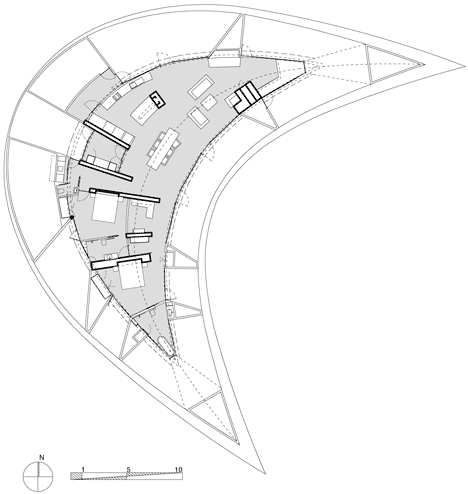
Both roof surfaces are 2 dimensional planes constructed from conventional battens and rafters and corrugated metal so the form can be practically achieved with conventional local building practices. Softwood scissor trusses were erected in 2 days on in plan arch ring beams of laminated timber braced by the remnant buttresses. Laminated timber beams most aptly suited the formation of the sine curve form of the building courtyard shape, the natural curve of material ductility.